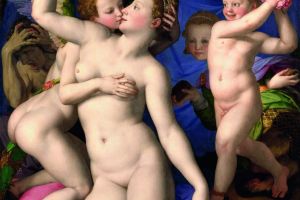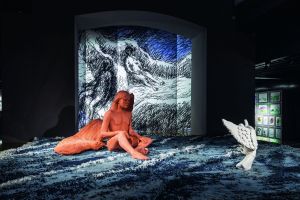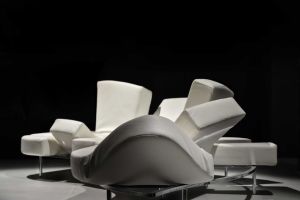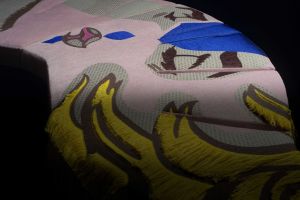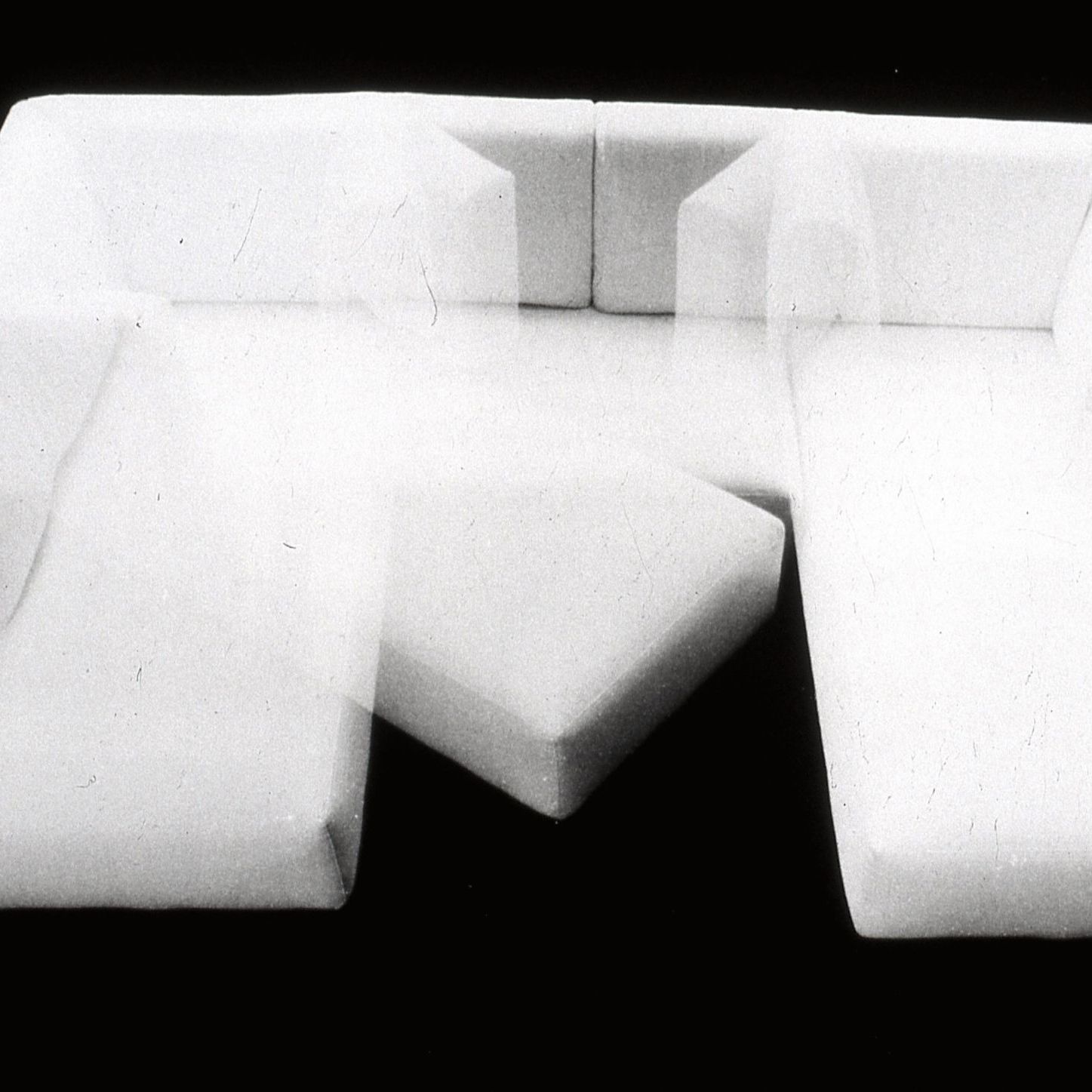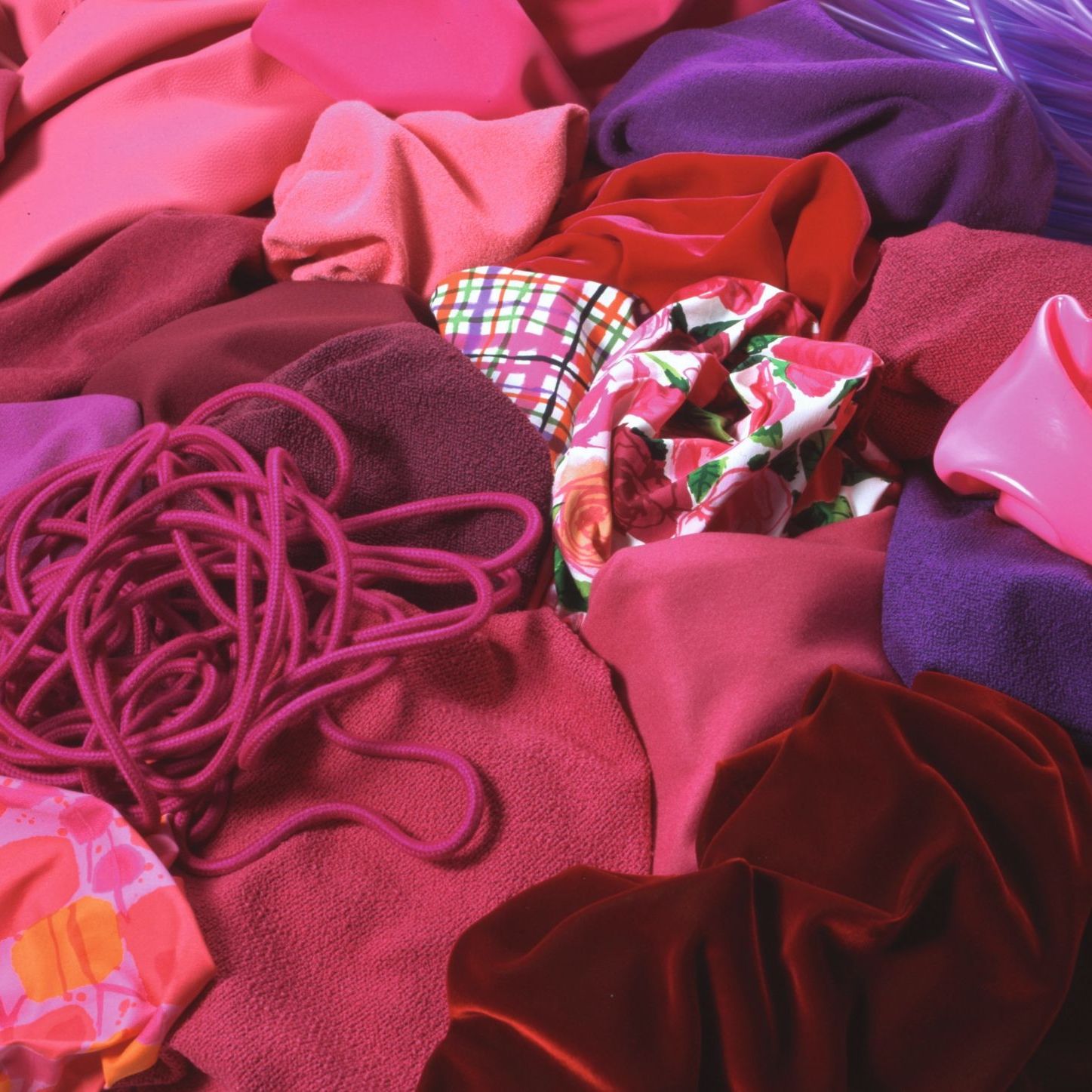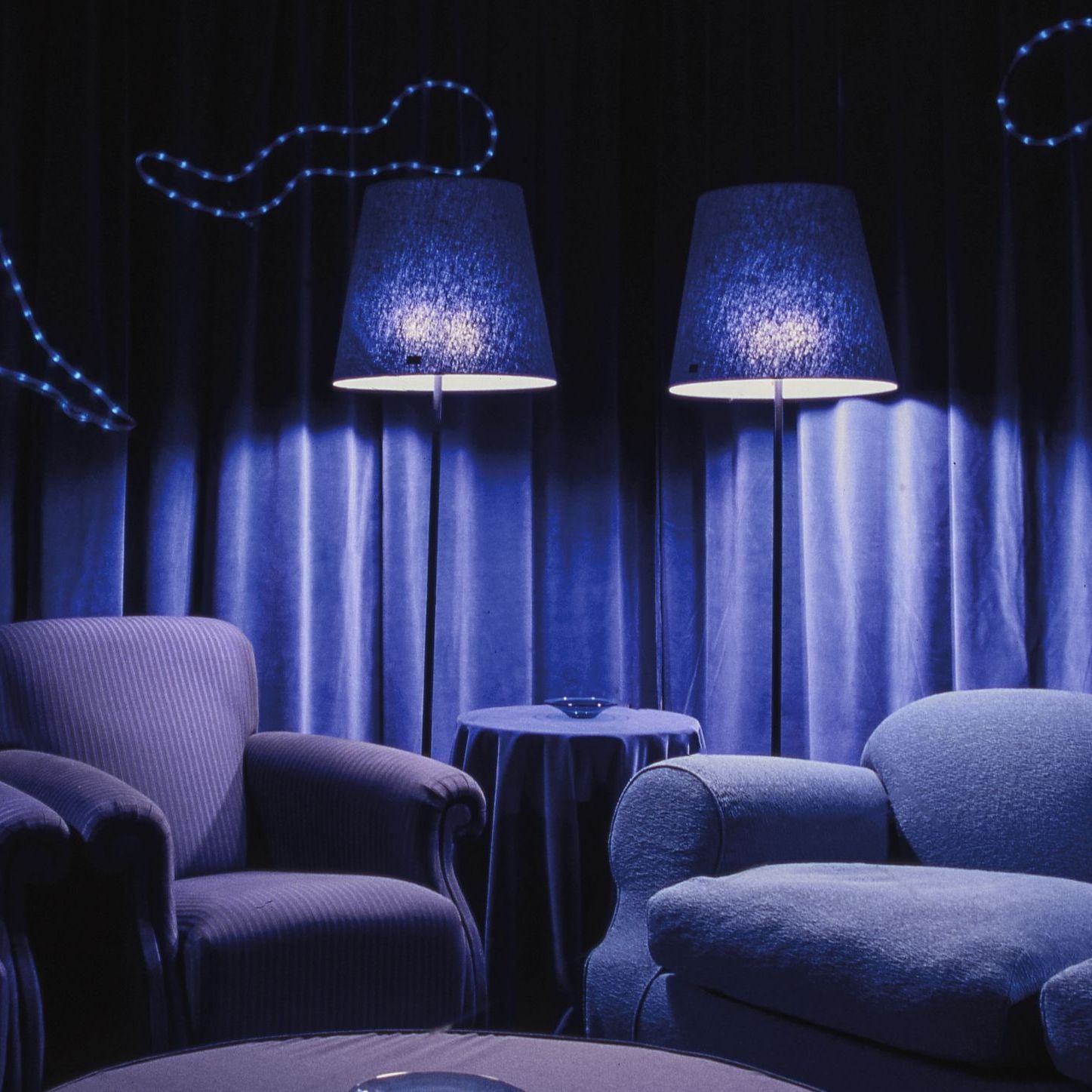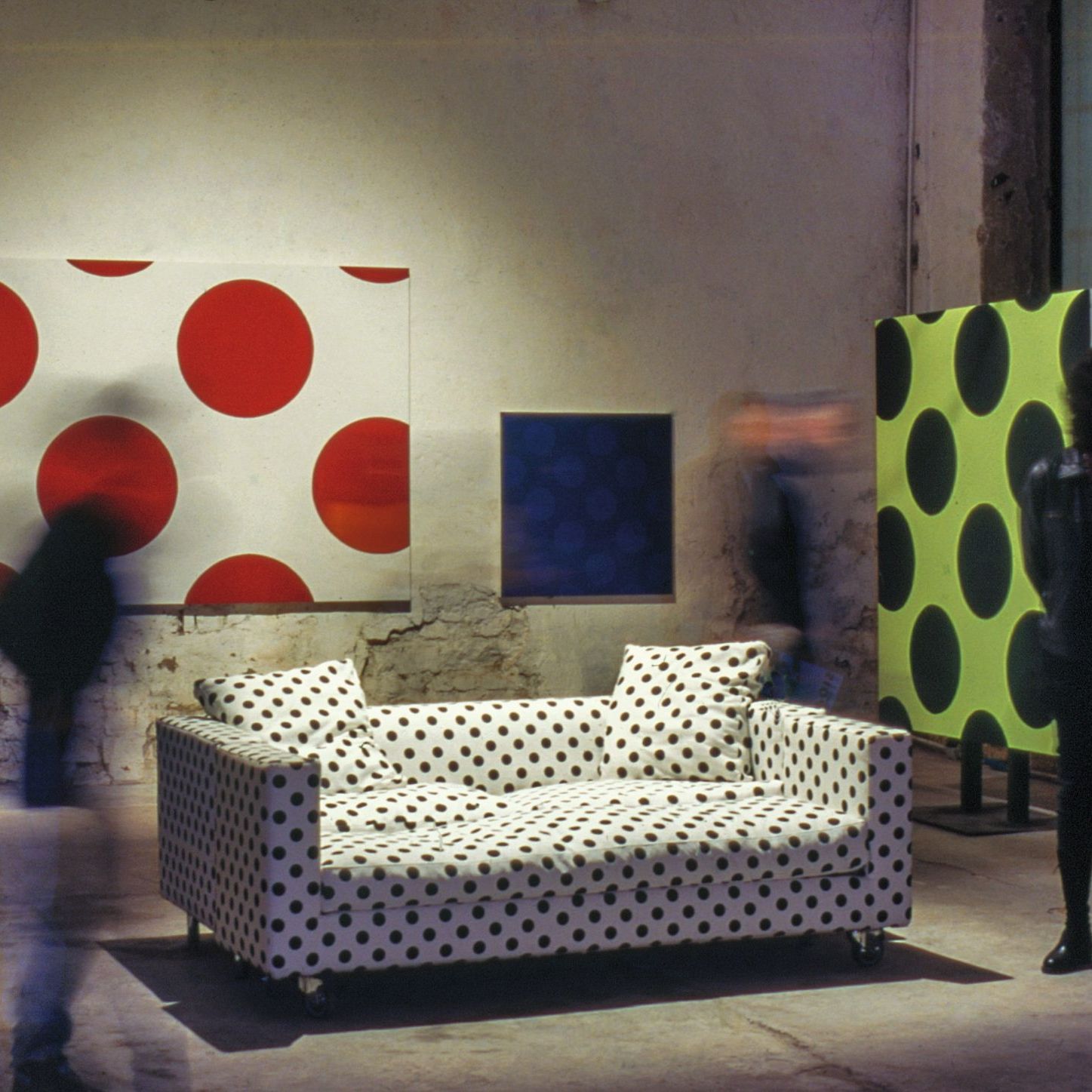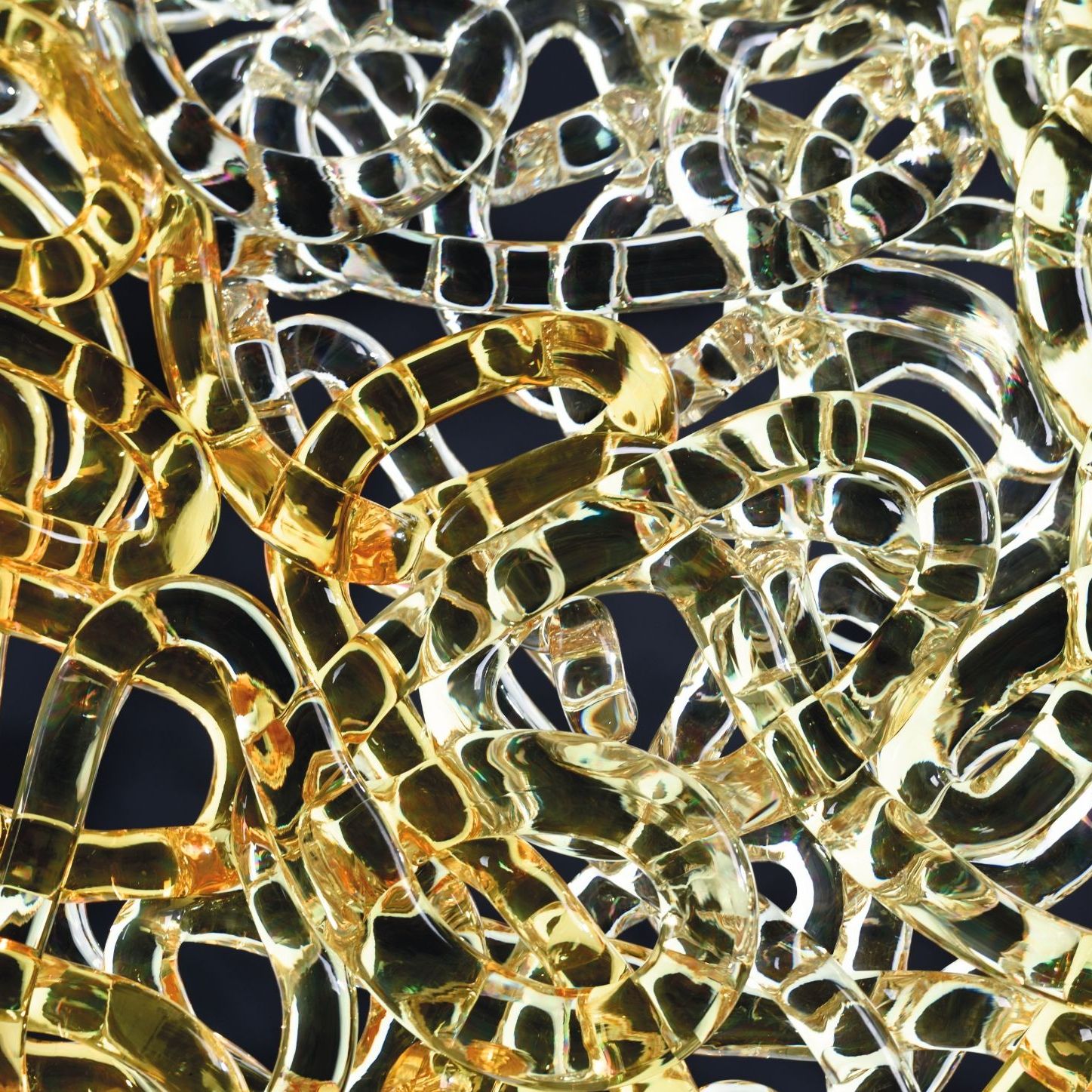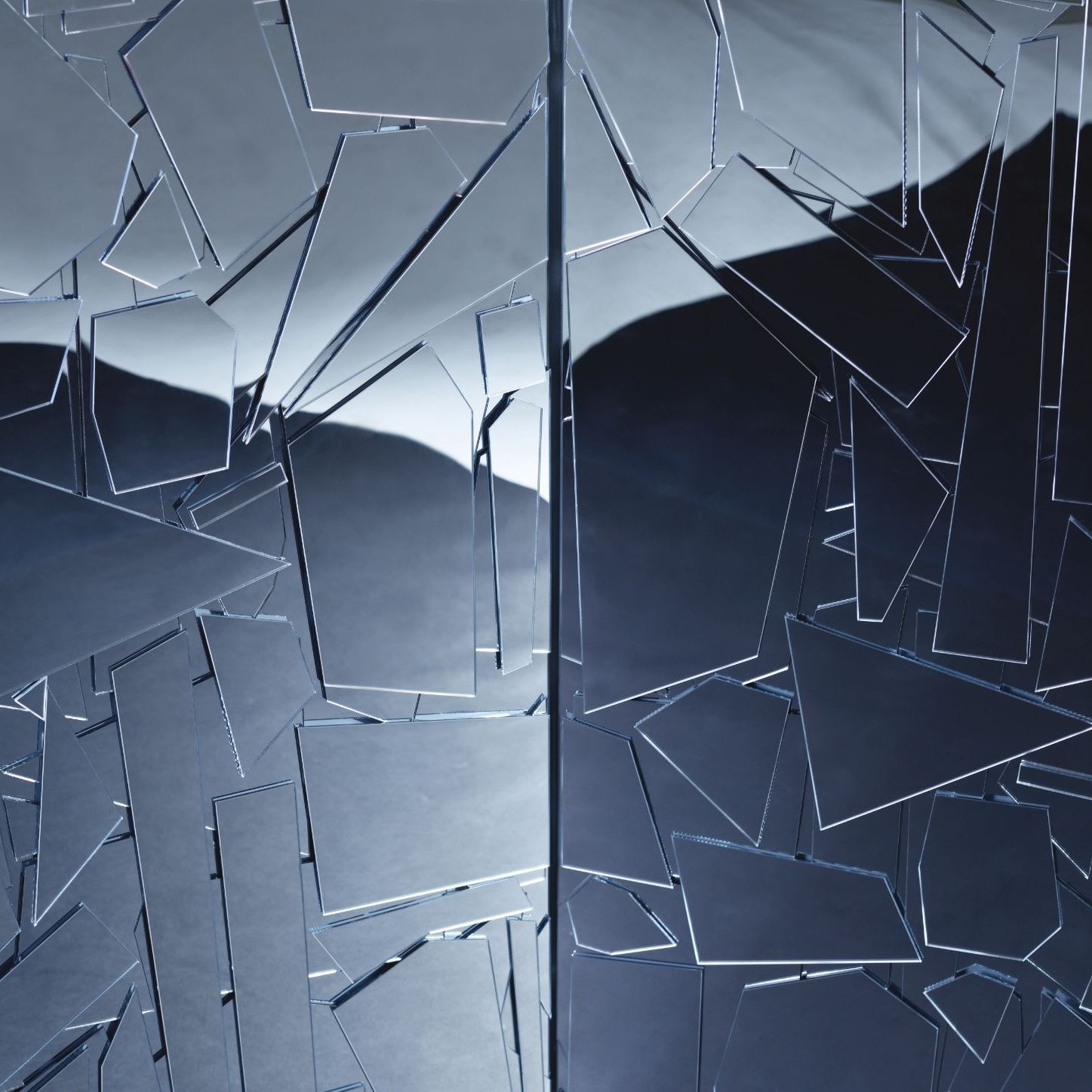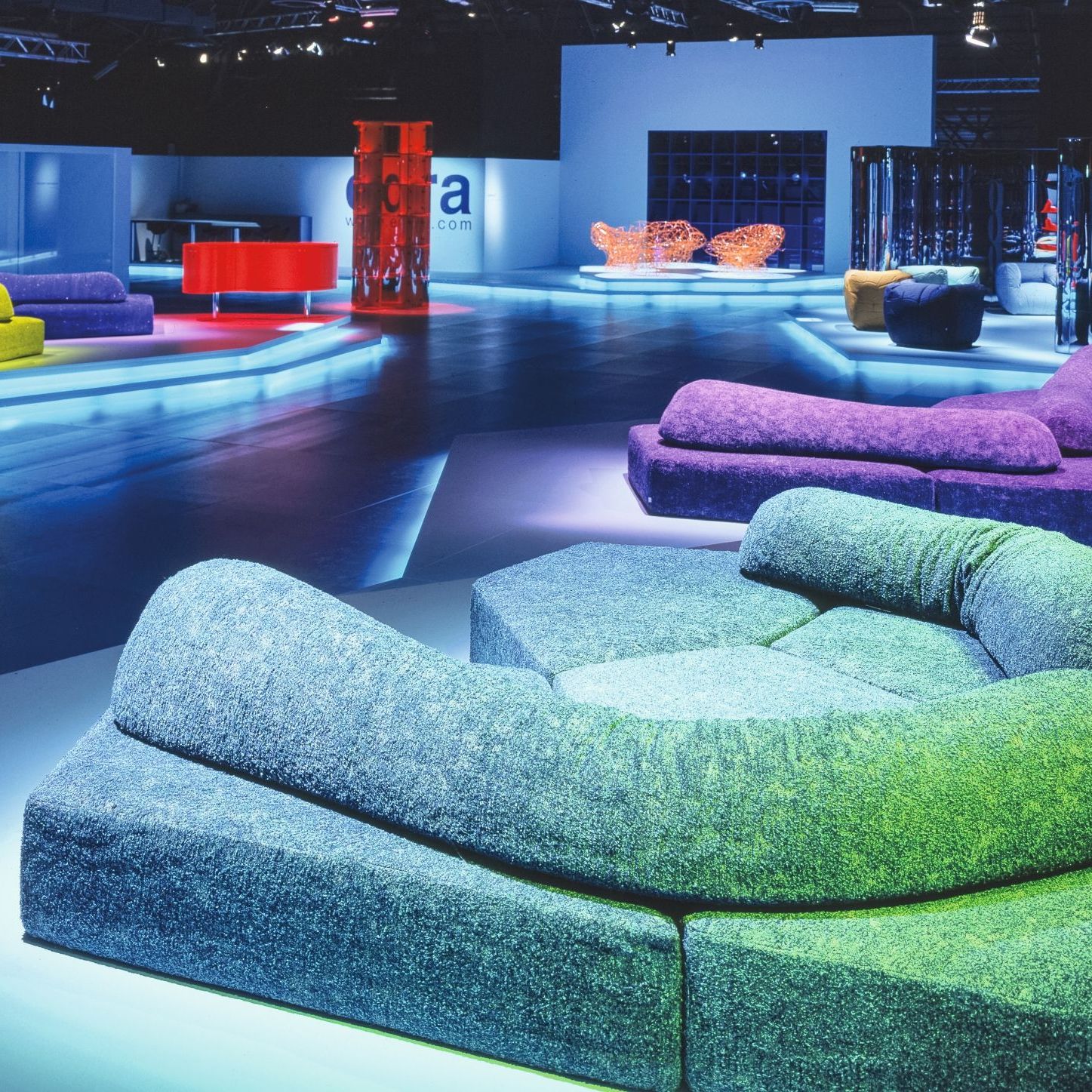
November 2023
Only one "Way"
When we met, this is how Edra president Valerio Mazzei presented his company to me: “Once you understand the origins, that is the direction, and it has never changed”. Although the statement might sound extreme it describes a fundamental element of the company, a continuous line tying round every choice made there. We could describe this criterion as the "way", a journey that has been the result of successes, intuitions, invaluable stories and a keen sense of entrepreneurship. The way acts as a beacon, guiding continuity and concreteness of choice in the company. It is based on a series of virtues that has defined Edra from the outset together with the awareness matured in almost forty years of growth. It is a story built on the encounters, mutual understandings and dreams of people who believed a small company in Tuscany could quickly become internationally known.
The beginning
On the evening of 11 July 1987, at the Marconi Gallery in Milan, Edra presented four pieces signed by four names unknown in the world of design: Maarten Kusters, Giorgio Ferrando, Clare Brass and Giovanni Levanti. The authors of these I Nuovissimi pieces had been selected from students in Milan's Domus Academy. Edra made its debut together with them in a series of seating proposals with the names like No stop, No step, No stalgia and No problem - four "negations" that shared a desire to express a new vision of design. Edra had made its choice, and chose to give voice to original ideas not tied to big names and fashions.
Further confirmation of this desire came with the Zaha Hadid collection. Just one year later the company took another step forward with Hadid, both in terms of the new project's semantics and the complexity of achieving it. It had to work across industries (naval and automotive) and create synergy between them, use advanced technology and exploit artisan skills within the company to the limit. The project's finale was crowned by a memorable evening at the Rolling Stone nightclub in Milan.
At the time several recent graduates of architecture and design, including Roberto Semprini and Mario Cananzi, approached Edra with their own proposals. In the book titled True Stories with Edra these two designers describe how they mislaid a drawing for a "spiral sofa" before attending an interview at Edra. They found it at the last minute crumpled in the waste bin. The drawing was a free-hand interpretation of Vladimir Tatlin's never-completed Tower. This was 1989 and the Edra stand was in shades of red. Products were red, lights were red and Campari soda, the only drink accepted on the stand, was red. The Tatlin sofa was presented at Milan's Salone del Mobile dressed in red.
The Summer of 1990
Given there was no 1990 edition of the Salone del Mobile, Edra decided to organize a place where it could share news with clients and press by inviting them to holiday at Club Mediterranée Hammamet in Tunisia. To the guests' surprise Edra presented its collections inside the walls of an ancient monastery fortress, the Monastir ribāṭ. It was the perfect setting to highlight the qualities of Edra pieces, a particularly atmospheric context of "living spaces" curated and illuminated using a single colour. The event was a success and people at Edra still affectionately recount anecdotes. Such as the time Masanori Umeda collected amphora vases from the sea that local fishermen use for catching octopus, convinced he had archaeological relics on his hands.
Immediately, on returning to Italy, Edra presented the Flowers Collection in a post-industrial warehouse space in central Milan known as La Rimessa dei Fiori. Positioning the Getsuen and Rose Chairs at the centre of this space, without too much emphasis, was alike to creating colourful flowerbeds in an almost surreal atmosphere. Visitors were enchanted, transported by the Flower chairs to the moonlit garden that had inspired Masanori's project.
The Collections
What Edra has always tried to do in its presentations is highlight the qualities of its models. In the early years of the Salone del Mobile Edra stands were monochrome. Choosing uniformity for the exterior aspects focussed attention on structural details. In Edra's Album no. 11 of 2005 we can read “Colour was intensified with lighting of the same tone, defining dense clusters of monochrome. [...] holistic colour highlights singularity of form while lending sameness to difference” .
Edra went through seasons of colour: 1987 was yellow, 1989 was red. In 1991 blue velvet draped the Edra exhibition space, bright blue neon designs (by Guido Venturini) shone in the semi-darkness like street signs in New Orleans or Las Vegas, and on that occasion Blue Curaçao drinks were served to the notes of Blue Velvet.
The year 2001 was the year of the Pink Collection. This was followed by "Transparencies"; silver and gold "Metals"; saturated colour and pure whites in contrast; and nature-inspired installations like "l'Acquario" (2004), and "Historia Naturalis" (2006). These were some of the stages on a long journey leading in 2015 to dematerialization with mirrors, an idea by Valerio Mazzei that came to define Edra's exhibiting model and which has also been used in Spazio Edra since 2017.
Made to Measure
Upholstery is a fundamental element of seating and an important part of furnishing projects in terms of quality and expressive value. Covers are always the result of both technological and conceptual research, including technical fabrics taken form other sectors, adapted by Edra, and presented on furnishings in innovative ways.
Monica Mazzei, vice-president of Edra, has always worked on selecting and creating original fabrics that make it possible to best express a model's identity and - when necessary - dialogue with context. In the early years the harmony of Edra's exhibition spaces was created by studying of 'families' of fabrics. These were divided into themes based on colour and landscape such as "Grotta Azzurra" and "New York". It was a different approach from Edra's current way of working but coherent with theme-based presentations of the time.
Patterned fabrics like “Nuvole” used for the Standard sofa, and the reverse gobelin used for Sfatto sofa are woven on jacquard looms. Certain very complex projects such as the “Skykiss” fabric used for the Flap sofa, and the “Odalisque” used for Sherazade are still made with traditional tapestry techniques. Selection is even more rigorous when working with patterned fabrics, especially on the rare occasions printed fabrics are used. In 2001 three original designs by Ken Scott, the “gardener of fashion" who rose to fame in the 1960s and 1970s, were selected and printed exclusively for Edra. His flower compositions and harmonies of colour create emotional connection in a collection using the idea of excess to convey Pop Art and New Age energy.
Polka Dot
Massimo Morozzi's polka dot print marked the company's history in the mid-1990s more than any other. At the time Morozzi was Edra's art director had rediscovered the charm of the dot which Marco Senaldi describes as “a geometric figure without parts or dimensions, which is therefore both a 'starting point' and a 'point of arrival'” in the Edra catalogue of 1995. Polka dots that had been used in 1950s and 1960s Pop Art and fashions took on new conceptual value for Edra. As Massimo Morozzi has written, polka dots are not simply a finish but a texture that breaks through the surface: polka dots mean you can make a space as abstract as you like, creating uniformity and dynamism at the same time. Throughout the 1990s the polka dot finish continued to define the Edra collection, appearing in Morozzi's paintings (often present in Edra installations and stands), in press releases, catalogues and in-house material.
"Mobile" furniture
A wide range of upholstery continues to be key in creating models with maximum capacity for personalisation. Edra's seating always works towards universal use and adaptation to context. Already in 1987 we can see this functioning on structural and functional levels. The No Stop chair had two reclining backs that rotate full circle. It seats two people in situations that could be formal or informal, convivial or non-convivial. Even more “mobile” are Stefano Becucci's Andy chair and the Square and Hi Square chairs by Massimo Morozzi which are easily movable from place to place with their wheel-feet .
The great maestro of freedom has always been Francesco Binfaré and it was Edra's obstinate dream of a dynamic comfort adaptable to all situations that made the company approach him. Innovative projects immediately followed: the L' Homme et La Femme sofa (L 'H/F) of 1993: Angels chaise longue-cum sofa in 1996; the Flap sofa in 2000. Since then together with Binfaré Edra has created seating that lives and vibrates with an energy of its own. A contributor to Edra's 1995 Album 1 remarks, “you could construct your space the way you wanted and then change it again at your pleasure. So home really did become your life stage because finally the scenes were interchangeable, not fixed like a sentence."
True freedom
Binfaré argued that "true freedom" could only be achieved by rethinking fundamental constraints in the sofa's unchanging back and seat. Experimentation followed with the sofa's horizontal level, and a mechanism was invented allowing backs to move round seats and vice versa. A solution was patented with a lever that rotates the pieces through 90 or 180 degrees under the LH/F sofa. The back could also be concealed in the Flap sofa, lined up with the seat to give a flat multifunctional structure. In the furnishings world these functions were revolutionary and paved the way for other projects like the On the Rocks sofa which was created with an idea as simple as it is radical: total separation of back and seat. Results like these were only possible with Binfarè's vision and Edra's experimentation, intent in those years on patenting a soft foam adaptable to every physical position called Gellyfoam®.
After breaking with restraints, creative stimulus could only go in the direction of reconstructing, or re-interpreting, and the new Standard sofa. Although it is a rediscovery of a "traditional" form the sofa's "true freedom" lies in the possibility of choosing how to use the arm and backrest configuration, no longer fixed but adjustable as desired. Since then the Intelligent Cushion, offering maximum comfort, has been the heart of Edra sofas.
The Dream Factory
Edra's history has been marked by a series of inventions, innovations and patents. Recounting the company's early years Binfarè recalls, “Edra's appeal was its need for adventure. It was their fundamental vision. And I could feel that.”
Edra has always been a laboratory, and increasingly, a technology platform. For many designers it has been a dream factory where rope, PVC pipes, scraps of fabric and polycarbonate casts can be transformed into seating and armchairs.
First the Campana brothers, then Jacopo Foggini, found fertile terrain for their own material inspirations. Projects and designs were not necessary, just ideas, conversations and lots of prototypes. Over thirty-six years of history Edra has been a crucible for authors and given voice to multitudes of thoughts and projects. Some were just passing through, marking an experimental, genuine and very exploratory phase in the company. Others are still part of Edra's collection today. Each product is a piece in a larger mosaic that has emerged more clearly as the company continues to grow.
An element that connects the creation of every Edra piece is the depth of the story behind each experience. The "way", which we cited earlier, and that each new project aims towars, was made by taking these paths. Like roots reaching far to anchor and to nourish, these stories in the end all converge on one point: Edra.
 |
Alessandro Angeletti He works on Business Research and Analysis at Edra, and wrote his master’s thesis on an investigation into the theme of Design-Driven Innovation. He has a degree in Innovation Management at Scuola Superiore Sant’Anna di Pisa and Foreign Trade at the Ca’ Foscari University in Venice. He has always cultivated a passion for the arts disciplines, parallel with his interest in technology and business strategies. |





